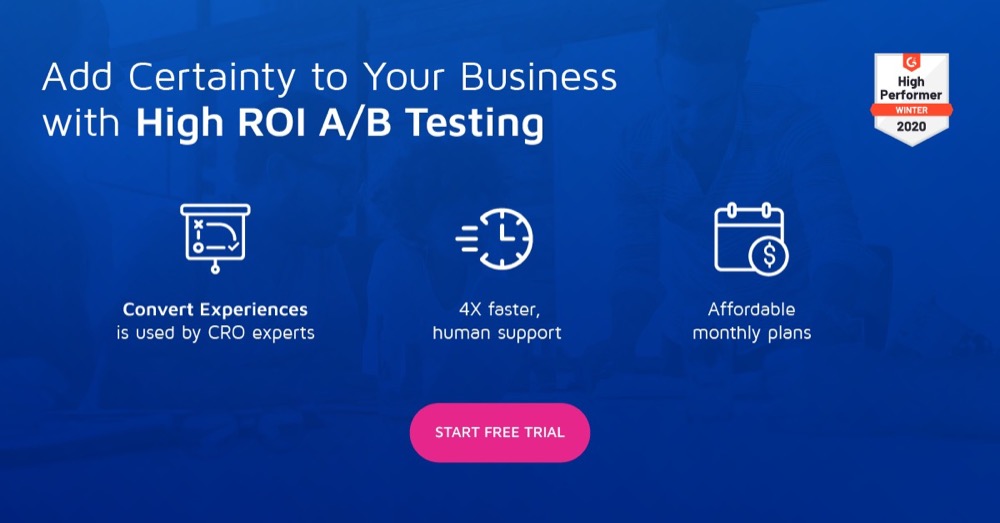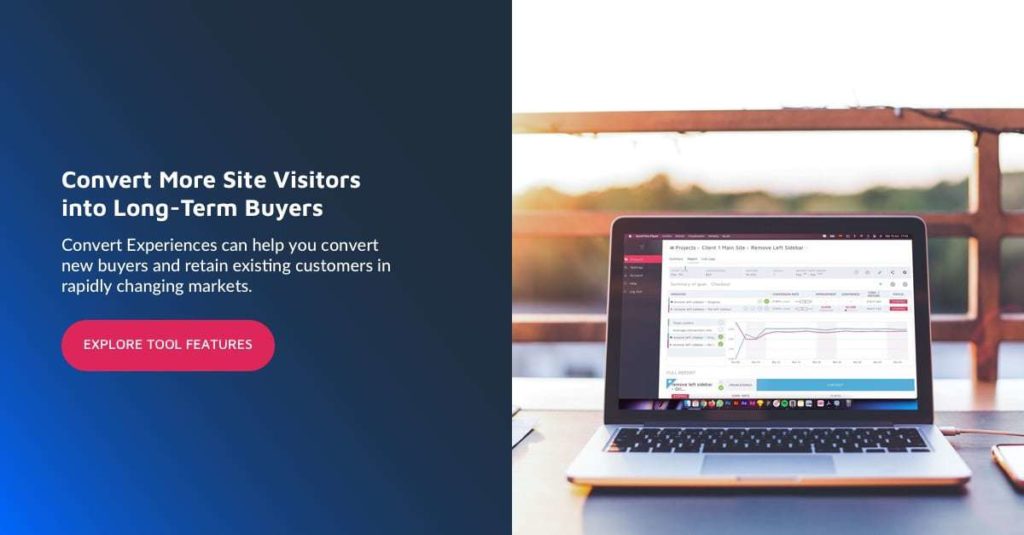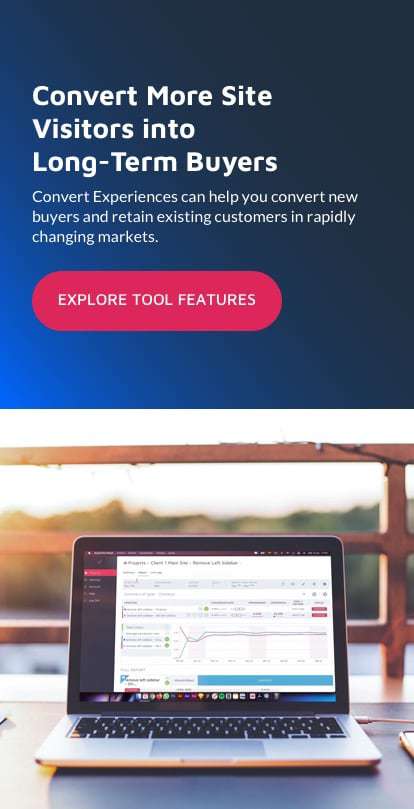What You Should Know About Your Customers Post-COVID-19
COVID-19, it has become a life-changing world-trauma.
Businesses scrambled to readjust to the changing needs and guidelines that emerged because of the pandemic. But what will happen after COVID-19?
The businesses that thrive post-COVID-19 on the customer-side will be the ones who understand the psychological progression, path of trauma, and be able to speak to their clients where they are in the movement.
Companies who excel in the industry will put customers first, test and experiment like their life depends on it (because it does), and position themselves as an authority and trusted advisor.
This article will examine what you should know about your clients and potential customers post-COVID-19. We will focus on:
- What do they consider essential?
- What immediate need are they looking to meet when they buy again?
- What are their fears about investing in your product?
- How to boost the acquisition of new customers.
Understanding Your Customer’s New Mindset
The phrase “Post COVID-19” could be deceiving. It could make you believe that the concerns, worries, and fears present during the height of the pandemic have all disappeared.
It’s not that simple.
Think about all the things that have already changed and will continue to be impacted:
- Social gathering: How long will it be before people hug each other or shaking hands with people who don’t live in their household?
- Travel will look different.
- Companies forced to create remote programs may continue and refine the ability for teams to work from any location.
- Previously underappreciated essential workers have become the new heroes. Their position and perceived value of their service will increase.
- Businesses once thought unable to transition to the web have now entered the online world, like Telemedicine.
The landscape will change as a result of COVID-19.
As a result, a new collective mindset will emerge, which induces new behavior and expectations.
This new customer mindset will be ever-evolving. It will be important to keep a pulse on the temperature of your clientele. You can do this using testing tools and software like Convert that provide data-driven customer feedback.
Nikola Baldikov, Digital Marketing Manager at Brosix, a secure instant messaging software for business communication reflects a similar sentiment and offered his advice on how to adjust for customers’ post-COVID-19 normal, he says:
“The COVID-19-19 crisis has led to significant trauma in society, which is important for businesses to keep in mind when it comes to their customers. As people begin to transition back to a pre-COVID-19 life there will still be a period of adjustment.
Customers may be hesitant during this time to make significant purchases or long-term commitments. The fear of another sudden emergency with massive lay-offs and economic shutdowns will likely be with customers for some time to come.
I’d advise businesses to focus on encouraging customers back with short term engagements and discounts. Many businesses offering services rightfully focus on annual subscriptions, for example. Potential customers will likely be hesitant to make such a long-term commitment at first, so it’s worth considering a shorter time horizon to boost acquisition. Hopefully, as time passes, this fear of another sudden shock will pass and businesses can again focus on longer-term initial customer engagement.”
Your Business Mindset Has Changed
Understand you also have a new mindset. Your business will not be the same post-COVID-19.
To have success in the future, your business SHOULD NOT be the same. It needs to evolve in parallel with the needs of your clients and prospects.
It is easy to talk about what customers want and need, but how do you put yourself in the position to provide them that?
The next sections will go over how your company can prepare.
How To Put Your Company In the Position To Serve Your Clients?
Serving your clients and prospects is both an inward-facing and outward-facing endeavor.
Here are a few ways to develop this new customer-centric holistic approach.
Serve Your Employees First
Your business’ ability to serve clients well is limited by your employees’ ability to meet their own needs.
If your employees are unfilled, confused, lack direction, compassion, or understanding for your clients and prospects (or themselves), it will affect how they serve.
Make sure you are serving their needs with training, emotional support systems, and clear directions.
New Training for Your Team Members and Clients
Training is a must.
People are working under a new program called “Post COVID-19,” and every team member needs to understand how it works.
This is a new era, with uncertainty, it is dangerous to assume your employees have all the answers, resources, or tools to make the adjustments.
Training should focus on areas where team members may have gaps or can learn to implement a skill they already have for a new result.
For instance, a training on Emotional Intelligence as a Way to Grow and Lead combines EI as a new component of leadership.
For your clients, it is important to highlight how essential your product is to their existence and success.
Dan Bailey, President of WikiLawn Lawn Care, shared what his COVID-19 journey was, and explained what caused him to shift directions from his initial reaction. Here is his candid response,
“To be completely honest, when the lockdowns hit and we lost most of our business, marketing was not a priority for me. I had all of our split testing stopped, as we were running far fewer ads to begin with due to budget constraints.
But the marketing team sat down with me and explained that even now, it’s important to do this. Specifically they showed me ad spend results from the past year highlighting how single, higher-budget ads didn’t perform as well as many different split-tested ads that divided the budget among them.
This kind of data is invaluable. I’m not the one running the tests and analyzing the numbers each day, so having an account to very clearly show the effectiveness even now is what convinced me.”
If Mr. Bailey’s team didn’t give him the training and information he needed, it is easy to see how the shock of COVID-19 could alter decision-making post-COVID-19.
Emotional Support Systems
Your employees may have a tough time coping with world events.
If they don’t feel mentally sound and staple, you cannot expect them to support someone else at a high level.
Ensure you have services in places that support your team. Ask, “If they need to talk to someone, is it something they can do with ease and with stigma?”
Now, with your team functioning in their full potential, you can shift your focus to creating a coherent voice to provide consistency throughout every touchpoint you have with your clients.
That takes planning…
Plan
Planning is essential. Unfortunately, businesses that fail to plan will fall by the wayside.
The challenge here is how do you plan when you don’t have all the answers. There is only one way to accomplish this in a reliable, scalable, repeatable way – you must use measured testing.
In “Three steps to prepare for the post-COVID-19 Business World”, Kenn Adach, Partner and CMO with Chief Outsiders, talks about the ‘re-plan’ that’s necessary for businesses post-COVID-19,
“You have your 2020 plans, but clearly COVID-19 requires forward-thinking, new strategies and re-planning on many fronts. Armed with these new insights from the marketplace, re-plan and prioritize strategies and tactics in all critical areas.”
Your plan will determine if you can unmask the opportunities that are always present during mass change and turbulence.
Eliminate the Guesswork
Getting feedback is a proven way to eliminate guesswork.
(1) Talk to your customers.
(2) Use testing tools like Convert to collect data.
This is not a zero-sum game, Ideally, do both.
Talk to your customers to understand where they are and what they want. They are the true experts and sit at the center of your business.
If your team has the capacity, create an old-fashion campaign. Call your clients directly and talk to them.
You will gather invaluable information, plus stand out from your competitors by making this one-on-one connection.
Redefining Your Business Post COVID-19
In an article, From surviving to thriving: Reimagining the post-COVID-19 return, Mckinsey, trusted advisors and counselors to many of the world’s most influential businesses and institutions, suggests that companies must ‘reimagine’ their business models as they enter the “new normal.” They say,
“those who step up their game will be better off and far more ready to confront the challenges—and opportunities—of the next normal than those who do not.”
They continue to outline four strategic areas businesses should focus on:
(1) recovering revenue,
(2) rebuilding operations,
(3) rethinking the organization, and
(4) accelerating the adoption of digital solutions.
Understand How Your Industry Will Look Post COVID-19
Each industry will look different.
In an expert survey series, Atlantic Council’s GeoTech Center submitted a questionnaire to over 100 tech experts about the impact of COVID-19 on technology in five areas: (1) Future work, (2) Data & AI, (3) Supply Chain, (4) Space Commercialization, and (5) health and medicine.
Here are a few highlights from their findings:
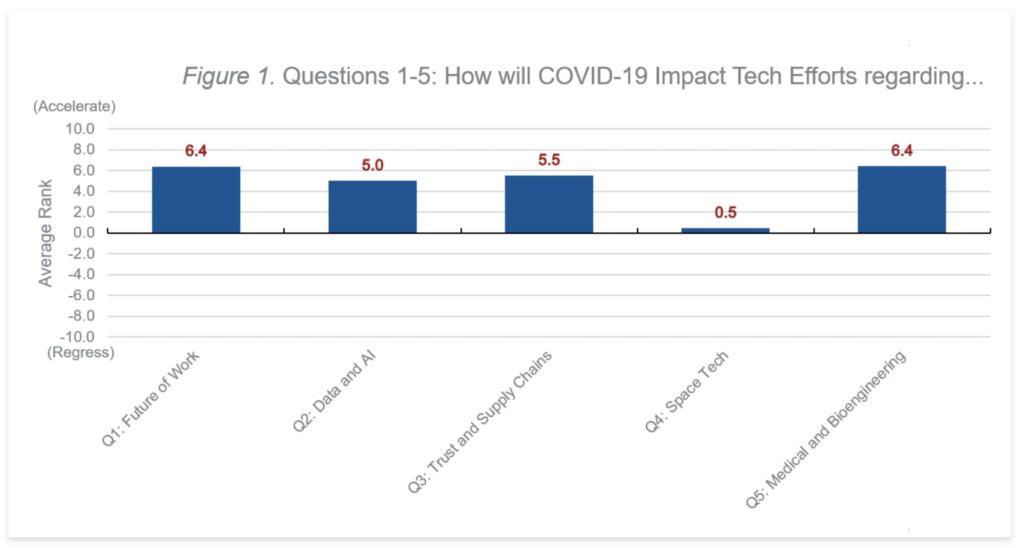
Despite the trauma and uncertainty of COVID-19, many believe that innovation in tech will speed up.
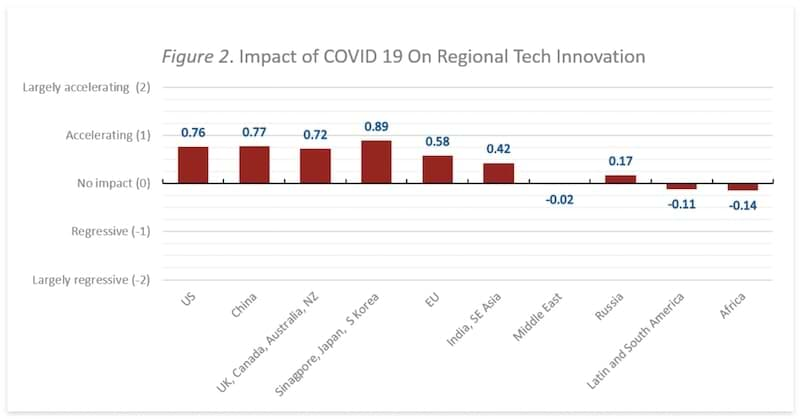
In the following figure, you see that experts believe Data and AI will have the most impact over the next 2-5 years.
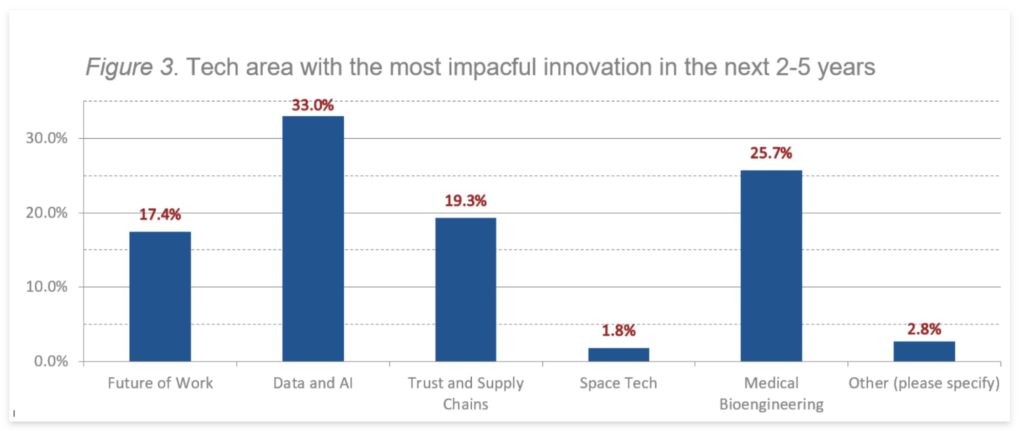
If you are a technology or a SaaS business examining how you can leverage AI may be an investment that offers big returns.
You can also use tools like Google Trends to stay on top of market trends.
Gaining New Customers
Acquiring new customers will require a combination of skills you used in the past and new ones developed as a result of the pandemic.
Jane Kovalkova is the Chief Marketing Officer at Chanty offered a hopeful outlook on customer acquisition during and proceeding COVID-19,
“We’ve actually had an increase in new customers ever since the pandemic started. Since we sell a tool for remote communication and collaboration, we’ve had quite a few new customers. What interests us most after COVID-19 is what made these customers turn to us in a time of crisis, with so many of our competitors offering seemingly similar products. We basically want to find out why we were the preferred choice out of so many companies that offer tools for remote collaboration.
Once we learn this and hopefully interview some of our customers, we’ll be able to refine our marketing strategy and positioning so we can become irreplaceable in the “new normal”. As remote work becomes more popular than ever before, tools like ours will gain in popularity and we want everyone to think of us instead of our competitors.”
Outlined below are four critical elements you must master as you redevelop your customer acquisition model:
- Testing and Experimentation,
- Lead with Value,
- Be an Authority, and
- Show your Humanity.
1. Test and Experiment
You must test. Experimentation and testing will be crucial during this time.
This is a new event where nobody, not even the experts, knows what they want. Ask. Test. The key is, don’t invest in assumptions, create hypotheses, and then use a tool like Convert to test them out.
Remember, in this newness, no one knows how accurate the forecast will be until time passes. Your business can’t afford to wait for that.
This is a wonderful opportunity for you to refine or rewrite your business’ experimentation rulebook.
This is the perfect time to inspire curiosity, creativity, and new experimentation.
2. Lead with Value
This is not a new message in the business space, but unfortunately, like with many anthems, the true meaning can get watered-down and bastardized as the words become commonplace the practice suffers.
Be generous with the information, support, and resources you provide during this period.
Ken Adach also weighs in on the importance of value:
“It’s important to remember that customers buy VALUE, and value comes from meeting their needs, which comes from understanding their needs, in their words and actions. Focus on providing Value, and Revenue and Profit will take care of itself.”
Leading with value means you have to understand your customers’ needs. Adach continues:
“Understanding what your customers will value in the post-COVID-19 business world and acting on it will ensure your survival and success and put you ahead of major competitors. This cannot be over-emphasized. Knowing the customer will sort the post-COVID-19 business winners from losers and also-rans.”
The steps your company takes now will matter. Don’t wait, your efforts will be cumulative.
Dennis Vu, CEO and Co-founder of Ringblaze – a virtual business phone system company that helps teams to better serve their customers, anywhere – explains why it is so important to ensure you are providing value to your customer He says:
“After the pandemic dies down, the one thing that should concern your SaaS company is what the customers found valuable during the pandemic. We ran an internal poll to find out that most of our customers appreciate the fact that they can collaborate within the app, besides just talking to their customers on inbound and outbound calls. Over 30% of the customers that joined us during the pandemic reported that the reason they chose us over the competition is because they can collaborate with their team internally. This helps us focus on the right aspects of our product so we can create that cutting edge and build an even better product, both for regular times and times of crisis.”
Amit Raj, Founder of Amit Digital Marketing, highlights pushing pain points so customers see your value:
“You need to have a gauge on your potential customers’ existing solutions, and whether you save them money or cost them more money. At a time when many companies are reducing spend on what they may deem “non-essential” your product may be a harder sell, even if the customer’s existing solution isn’t as good as your SaaS product.
And if it is a harder sell, make sure you are educating the target market with your content – content marketing is a good way of doing this.
Push pain points or layout exactly how much time your product can save them, how much money it can save etc. If you can ask any big, existing clients about creating a case study of how it impacted their business (with real stats and/or data) this can work wonders as well.”
When your customer can address specific pain points and offer clear and practical solutions, you become an authority.
3. Be An Authority
This is a time to build or capitalize on the authority of your brand’s voice. Both data and forecasters project that people will look towards leaders, having more trust in them. In times of turmoil, people want powerful leaders.
Position yourself as a leader and a trusted advisor.
Unfortunately, this doesn’t happen overnight. Hopefully, your company had been working on this kind of positioning before and during COVID-19.
Ramp up your authoritative presence.
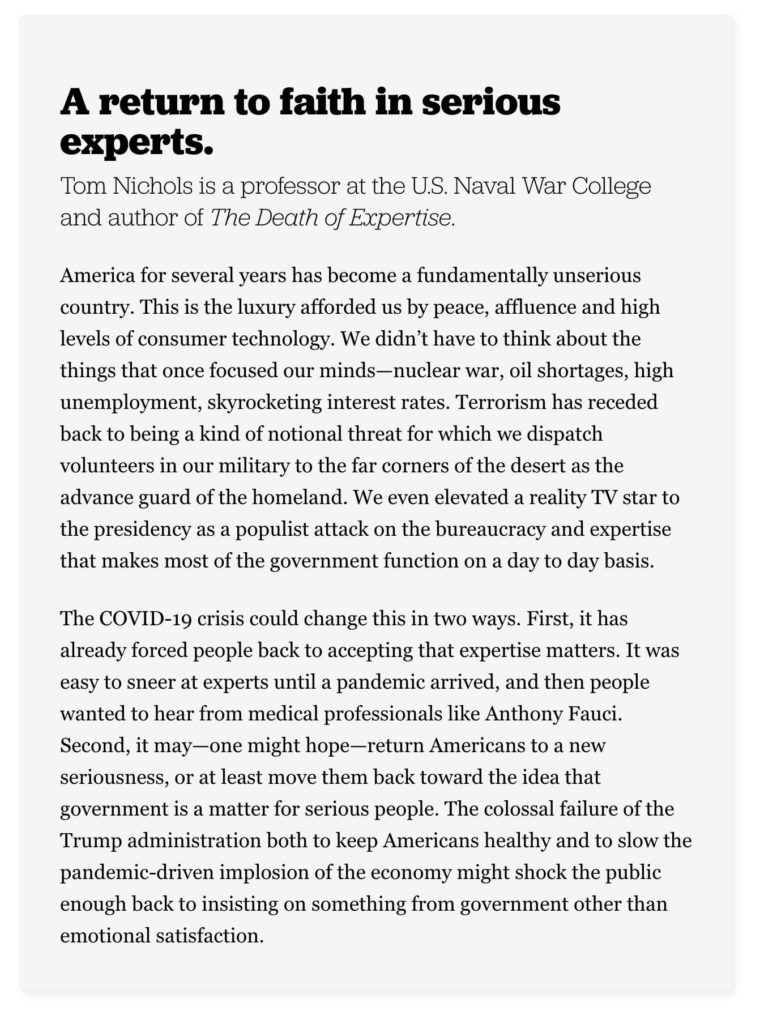
4. Show Your Humanity
This is a time to show the humanity of your brand. Post-COVID-19, people want to deal with other people and organizations that are relatable. Your customers will want and need assurance.
Nurture your existing clients. As suggested earlier, reach out to them to see how they are doing. Inquire about their business.
These conversations may give you insight into your customers’ needs and concerns. You may forecast potential customer churn and interrupt potential negative patterns by building new programs based on the additional needs that are surfacing.
Post-COVID-19 companies must understand customers and prospects better than they understand themselves. Though we suggest conversation, it can also be cryptic and difficult to pull out patterns, people will use old language for new paradigms. Have them share their stories with you. Have they had any big wins or losses using your software during the pandemic?
Listen with intent. Show you care. Showing your humanity will go a long way in learning about your customers and inspiring customer loyalty.
Shakun Bansal, Head of Marketing Mercer | Mettl, explains why companies should emphasize nurturing:
“These are absolutely challenging times and customers are taking their time, optimizing their businesses, and holding whatever it is that can take a backseat without affecting business revenues.
But people are keeping their ears to the ground to be aware of the requirements that might occur in the future when things start settling into normalcy. Or in the condition where Covid-19 hadn’t happened and measuring it against the new reality.”
Once you understand where your customers’ disposition, reflect it back to them.
Mirror The Language and Sentiment of Your Potential Clients
The language you use should match the tone and sentiment of your customers and prospects.
For example, instead of talking about how your product creates explosive growth, tailor your message with words like, “you help them recover, create stability, recession-proof,” because they will still likely be in the survival state.
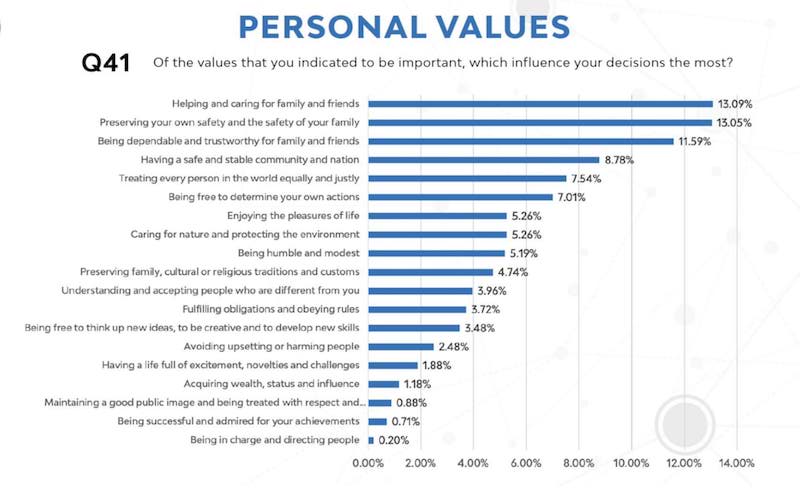
The industry experts keep echoing the mantra, “listen and capture the right tone.” But sometimes we still forget that on the other side of marketing and advertising are humans. Real people who have complex emotions that go beyond your companies’ avatar.
Keep this top of mind as you interact with prospects and clients.
New Buying Behaviors
We can safely assume that buying behaviors will change and evolve post-COVID-19.
For existing clients, Jeremy Querrec, VP Sales & Customer Services at OnCrawl, a SaaS technical SEO company says this about retaining customers:
“From a sales perspective, a good customer experience, transparency and a strong relationship are the key elements for client retention. Since the beginning of the crisis, we have experienced a 5% churn rate, which is similar to our usual churn rate. The average churn rate in our industry is usually between 5% and 7%. Direct marketing was one of our main customer acquisition channels but as many, we faced all our events being cancelled or postponed. We reallocated these budgets to webinars, paid campaigns and virtual client meetings and we have seen an increase of 30% in MQL compared to the previous period.”
Potential customers will ask more questions and do more research. Questions like, “how can they get more out of your product compared to what they use,” will not be a passing consideration, rather a make-or-break component.
One way you can look into buying behaviors is by examining customer churn. Malte Scholz, Co-founder of Airfocus – a software solution that enables smarter roadmap prioritization for teams and solopreneurs, lays out this strategy:
“The biggest lesson that SaaS companies can learn after the coronavirus pandemic should be found in customer churn. SaaS businesses should look into why their customers churn, by simply asking them a set of questions.
If customers are leaving because of the price, you may consider introducing additional plans in the future or decreasing the prices of your plans. If they’re leaving because they don’t need your app during the pandemic, they may not even consider your app essential for their business, which is an even bigger issue that you need to work around.
In the end, if people are canceling their subscriptions in the wake of a pandemic, do your best to find out precisely why they are doing it because you will be able to recession-proof your business if you can make it essential.”
Providing content and training that shows how to leverage your product to get more ROI out of it will be helpful.
Rameez Ghayas Usmani, a Digital Marketing Executive, agrees with this suggestion He says,
“Focus on visual content. Visual materials like infographics regarding precautions to protect yourself from coronavirus with your brand logo and company name on the visual can not only help customers to learn safety tips but also can boost your brand name and brand searches. Written content is undoubtedly useful but today visual materials such as infographics or videos are outperforming for marketing during this difficult time.”
Liam Pickard, Marketing manager for Klood Digital, a SaaS specialist growth agency specializing in inbound sales and marketing, shares more about what buyers will need. He says,
“Buyers need to have their questions answered. It is without a doubt the single most important thing we can do as marketers to help buyers regain confidence.. This is evident in research conducted by IBM that stated “63% of consumers think more positively about your brand if it gave them content that was valuable”
So understanding your buyer personas, and their questions are a crucial factor in marketing any SaaS product. It is essential where you already have persona’s in place to review these for a post-COVID-19 world. They will have additional concerns and new questions that you need to answer.
For example, we increased our leads generated by 19.6% when we looked at our personas, we found several new topic clusters that answered questions that did not exist pre-pandemic.
To get the insight that will help you learn more, speak to your existing clients, what fears did they have? How did you help them? Can you provide support and guidance? How do you add value to their day?
If you define what questions and fears your buyer has based on real feedback and build your content with the customer at the center, your marketing will benefit immensely.”
Testing is the Only Real Way to Verify
It is easy to make assumptions and believe every prediction and forecast about who your customers and prospects will become post-COVID-19. But to truly understand the state of your customers you must track and test these ideas, hypotheses, and the customer feedback you receive.
Again, testing is critical.
Using a powerful A/B and multivariate experimentation tool like Convert you can measure and evaluate changes in data. Coupled with your analytics tool of choice or heat mapping software, you can paint an accurate picture of changes in your customers’ behaviors.
While A/B testing won’t directly measure potential changes in your clients’ behavior, the data you get when you test can confirm or invalidate assumptions.
This is where companies with pre-COVID-19 functional testing programs have a slight advantage over their competitors who don’t.
Good Testing Practices Still Apply
Most optimizers who use experimentation for CRO know it is excellent practice to retest old hypotheses for accuracy and change.
If you have a robust testing program, it is an excellent chance that your testing strategies already align with validating customer behavior. Take advantage of this. Adhering to this testing fundamental post-COVID-19 will be an essential key to understanding your customers’ behaviors.
It also means you will have pre-COVID-19 data you can use to compare against new post-COVID data. You can validate the buyer’s behavior that you think changed.
If you don’t have a preexisting testing program or past data, no worries, the best time to start testing is now. Correlate the data you collect to dissect post COVID-19 buying behaviors.
Used the Strategies You Did To Grow Your Business – Be Agile
Convert’s CEO, Dennis van der Heijden suggests going back to basics and getting agile – use the Build, Measure, learn Cycle.
Learn from your analytics, build hypotheses, measure through A/B testing. If valid, implement, if not, don’t.
For example, you can create tests around the information gathered from user feedback and interviews using this feedback loop.
Use Testing As A Preventive Measure
Van der Heijden also urges smart companies to use testing as an offense, taking preventive measures against actions that may harm the business.
Transform a question like, “does it make us more money,” to “does it save us money?”
A/B Testing can protect you against losses because it can keep you from implementing something that will decrease your conversions.
For Insights: Create Customer Behavior Models
To gather data-driven insights on customer behavior, try creating behavior models.
Optimove defines customer behavior modeling as, “the creation of a mathematical construct to represent the common behaviors observed among particular groups of customers in order to predict how similar customers will behave under similar circumstances.”
In an article by Andrej, an entrepreneur, a digital marketer and an avid internet technologist, he examines the power customer behavior models have in forecasting, he says:
“Today, one of the cutting-edge approaches in this area entails building models that seek to predict customer behavior. By doing so, it becomes possible to peer into the future and create marketing plans that will be in lock-step with the various stages of a customer’s journey — even before they’ve started on it.
Creating a useful and accurate customer behavior model, though, takes a great deal of planning. It also calls for some careful execution and a fair amount of experimentation.
Here’s a step-by-step guide to help interested businesses to begin that process.”
Experimenting with New Buying Demographics
This Pandemic force many people online who never ventured into the online world. This is an excellent time to explore this new population.
For example, older people are buying ecommerce. There is a chance they will remain online post-COVID-19.
This would be an example of a fresh audience you want to experiment with. You can test things like:
- Payment options,
- Font sizes,
- Delivery options,
- Personalization.
Companies that have prioritized experimentation will service these new bodies of prospects better because of insights gained from measured experimentation.
You Are Now Ready to Lead
Here is a review of what your clients will want from you:
- Show your humanity.
- Be transparent.
- Nurture.
- Provide a product that increases their ROI.
Be relentless about studying your clients’ needs and desires.
Remember to think about each component of your business as it relates to your clients and prospects. This includes advertising, marketing, purchasing behavior, setting new paradigms, and experimentation.
This is the time to amplify your core business principles that set you up for success in the past.
Last, practice Progress, not Perfection – You may not get it all right! You may make mistakes with your customers. But as long as the effort and sincerity are there, your customers will give you the space and opportunity to pivot.
What you do today will set up the relationship you have with your clients and prospects in the future.
Use experimentation to help you make sound decisions based on data, not hunches. This recipe will help you know and serve your customers with excellence post-COVID-19.
Written By
Nyaima Smith-Taylor

Edited By
Carmen Apostu

